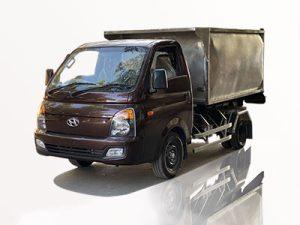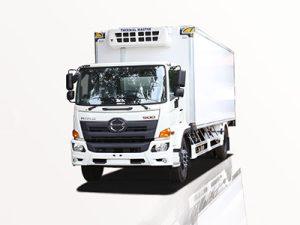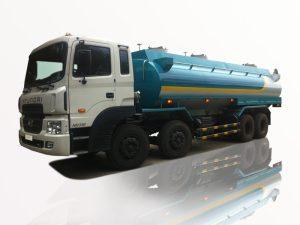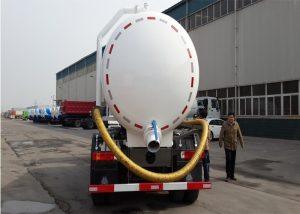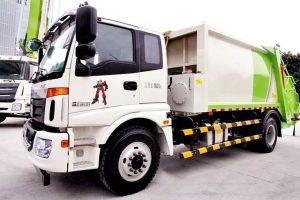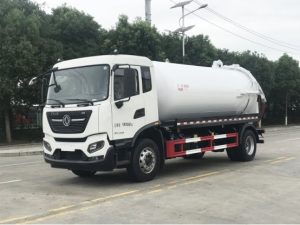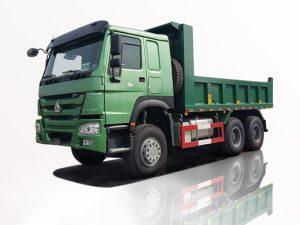Monday to Saturday - 8:00 -17:30
Everything You Need to Know About Street Sweeper Trucks
Introduction
Maintaining cleanliness in urban environments is crucial for public health and aesthetic appeal. One of the most effective tools used in this endeavor is the street sweeper truck. These vehicles are designed to keep streets, parking lots, and public spaces clean from debris, leaves, and litter. With various types available, street sweeper trucks have evolved to meet different cleaning needs, making them essential for municipalities and private sectors alike. In this article, we will explore the features, working mechanism, types, benefits, and how to choose the right street sweeper truck for your needs.
Understanding Street Sweeper Trucks
What is a Street Sweeper Truck?
A street sweeper truck is a specialized vehicle equipped with mechanical brushes and vacuums designed to clean roadways effectively. The primary function of these trucks is to gather loose debris and dirt from paved surfaces. This not only helps in maintaining cleanliness but also aids in preventing pollution and reducing potential hazards.
The Components of a Street Sweeper Truck
Street sweeper trucks consist of several key components:
- Brush Systems: These include rotary or cylindrical brushes that sweep debris into a collection bin.
- Vacuum System: A powerful vacuum collects dirt and dust particles that are lifted by the brushes.
- Water Spraying Mechanism: Some trucks have water spraying systems that reduce dust during the sweeping process.
- Chassis: The base of the vehicle which supports the functionality and stability of the street sweeper truck.
- Collection Bin: This bin holds the debris until it can be emptied.
Types of Street Sweeper Trucks
Mechanical Sweepers
Mechanical sweepers use brushes to move debris into a hopper. They are effective for cleaning hard surfaces and are commonly seen in urban areas. Their simplicity and cost-effectiveness make them a popular choice.
Vacuum Sweepers
Vacuum sweepers are equipped with a vacuum system that sucks up debris from the street. They are particularly effective for fine particles like dust and leaves and are often used in residential areas.
Regenerative Air Sweepers
These trucks use a combination of air and brushes to clear debris. Air sweepers are known for their ability to pick up very fine dust and are often used in settings that require high cleanliness levels.
Hybrid and Electric Sweepers
With advancements in technology, hybrid and electric street sweeper trucks are emerging. These vehicles offer lower emissions and quieter operations, making them perfect for urban environments where noise and pollution are concerns.
How Street Sweeper Trucks Work
The Cleaning Process
The cleaning process of street sweeper trucks can be divided into several steps:
- Preparation: Operators prepare the street sweeper truck for operation by checking fluid levels, cleaning brushes, and ensuring the vacuum system is functional.
- Surface Sweeping: The brushes rotate to lift debris from the street surface, pushing it towards the center of the truck where the collection system can access it.
- Debris Collection: The vacuum system creates suction, pulling air and debris into the hopper.
- Dust Control: Water sprays may be used throughout the process to limit dust emissions, ensuring a more efficient cleaning operation.
- Disposal: Once the collection bin is full, operators will drive to a designated disposal site to empty the debris.
Benefits of Using Street Sweeper Trucks
Improved Public Health
Street sweeper trucks play a significant role in improving public health by reducing the amount of debris and pollutants on the roads, which can cause various respiratory issues.
Enhanced Aesthetics
Clean streets and public areas enhance the overall aesthetics of a community, encouraging tourism and local patronage of businesses.
Environmental Benefits
Regular street sweeping helps in reducing stormwater runoff pollution by removing debris that would otherwise clog storm drains and enter water bodies.
Increased Road Safety
By keeping streets clean from debris, street sweeper trucks can help in reducing road hazards, leading to fewer accidents and improved driving conditions.
How to Choose the Right Street Sweeper Truck
Assessing Your Needs
Before selecting a street sweeper truck, it’s crucial to assess the specific cleaning needs of your area:
- Size of the area to be cleaned.
- Type and amount of debris common to the area.
- Budget for purchasing or leasing a street sweeper truck.
- Environmental regulations regarding emissions and noise.
Evaluating Different Models
Once you have assessed the needs, it’s time to evaluate different models. Consider the following:
- Fuel efficiency and environmental impact.
- Maintenance requirements and service support.
- User-friendliness and operator comfort.
- Performance ratings and reviews from other users.
Practical Examples of Street Sweeper Truck Usage
Municipal Applications
Many cities employ street sweeper trucks to maintain cleanliness in busy downtown areas. For example, a city may schedule regular sweeping every week to keep sidewalks and streets free from litter and leaves.
Construction Sites
Construction companies often use street sweeper trucks to clean up debris and dust from construction activities. Keeping the surrounding area clean can help with compliance regarding local regulations and promote safety.
Parking Lots and Private Properties
Businesses may hire street sweeping services for their parking lots to maintain a clean environment for customers. Regular sweeping not only improves aesthetics but also enhances safety by removing slip hazards.
Maintaining Your Street Sweeper Truck
Routine Maintenance Checks
Regular maintenance checks are essential for ensuring optimal performance of a street sweeper truck:
- Inspect and clean brushes regularly to ensure efficient debris collection.
- Check the vacuum system for blockages.
- Monitor fluid levels and replace any worn-out parts.
Seasonal Preparation
Preparing your street sweeper truck for seasonal changes can enhance its performance:
- Before fall, check the equipment more frequently due to increased leaf litter.
- In winter, ensure that the truck is prepared for snowy conditions, adjusting for cleaning efficiency.
The Future of Street Sweeper Trucks
As the demand for cleaner and more sustainable urban environments grows, the technology behind street sweeper trucks continues to evolve. Innovations in autonomous driving, increased automation of cleaning processes, and the integration of IoT technology for tracking operations are just a few advancements on the horizon. These developments aim to further improve efficiency, lower operational costs, and lessen the environmental impact of street cleaning operations.
FAQ Section
1. How often should street sweeper trucks be used?
The frequency of street sweeping depends on the area. Urban centers may require sweeping several times a week, while rural areas may only need it monthly.
2. What is the average cost of a street sweeper truck?
The cost varies based on the type and model, ranging from $150,000 to over $300,000 for new models. Used trucks can be more affordable, but may require more maintenance.
3. Can street sweeper trucks operate at night?
Yes, many municipalities schedule street cleaning at night to minimize traffic disruptions and improve cleanliness during peak hours.
4. What kind of debris can street sweeper trucks collect?
Street sweepers are designed to collect a variety of debris, including leaves, dirt, litter, small stones, and even hazardous materials, depending on the model.
5. Are there environmentally friendly options for street sweeper trucks?
Yes, there are electric and hybrid street sweeper trucks that produce lower emissions and are quieter than traditional models.
6. Do I need a special license to operate a street sweeper truck?
Typically, operators need a commercial driver’s license (CDL) to operate street sweeper trucks, as they are considered commercial vehicles.


